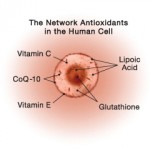Are you looking for superior antioxidant foods?
In the flood plains of the Amazon between Peru and Brazil lives a bushy tree – Myrciaria dubia- usually called Camu-Camu. After the fragrant , waxy white flowers drop it develops small purple-red colored fruit that looks similar to a cherry. Among herbalists , camu-camu is valued for its astringent, antioxidant , antiviral, anti-inflammatory , analgesic and emollient and nutritional characteristics and additionally is a source of phosphorus, protein , niacin, iron , thiamin riboflavin , calcium, beta-carotene , and three amino acids. It’s an abundant source of flavinoids.
People who take Camu-camu because of its vitamin C know that only 1-2 grams of this naturally present vitamin C is a superior immune system strengthener than large doses of commercially available synthetic vitamin C . Camu-camu is around two to three percent Vitamin C by fresh weight, which is an unusually high concentration and testifies to Camu-camu’s value as an antioxidant food . And antioxidants are vital for my 2 other favorite “antis” antiaging and anti-inflammatories .
Camu-camu is now being studied to assess its emotion balancing properties . As published in the Clinician’s Handbook of Natural Healing (1998) by Gary Null, Ph.D. this fruit is second in terms of the potency of the chemical compounds it contains for its mood balancing properties. While the connection has not been thoroughly researched , it seems that Camu-camu might offer nutritional help for your brain’s natural production of mood balancing compounds . Additionally, research has been released linking vitamin C and a higher level of serotonin.
Dr Mike Adams, (who’s called the Health Ranger) said this about Camu-Camu:
“I’ll tell you a secret about camu. It’s the highest natural source of vitamin C in the world. And it’s not just one isolated chemical (ascorbic acid), it’s the full symphony of protective antioxidants. My research on this herb , based in part of the works of Dr. James Duke, leads me to the conclusion that camu-camu crosses the blood-brain barrier and offers extraordinary protection to the nervous system. There is no question in my mind that this product can drastically reduce eye disorders, including macular degeneration, as well as protect the brain and nervous system from degenerative diseases like Alzheimer’s and dementia.”
Camu-camu is just one of the natural antioxidant foods found in AIO- Premium Cellular Health


